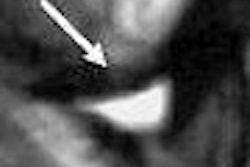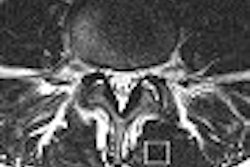I would bet that MRI owners in the U.S. and their accountants now make up the largest concentration of men and women with furrowed brows, chronic insomnia, sweaty palms, and heart palpitations. Why should such a group of accomplished individuals find themselves in such a sorry state? Because, as a whole, this group is concerned that the diagnostic imaging reimbursement reduction provisions of the Deficit Reduction Act (DRA) of 2005 are about to turn their nitrous-burning hot rod of an economic engine into the financial equivalent of a Kick-'N-Go scooter.
In an effort to curb government spending, one provision of the DRA dramatically slashes reimbursement rates for a number of CT and MRI scans for patients receiving government-provided healthcare coverage. The expectation in the imaging-provider world is that whatever cuts are implemented for government reimbursements will pave the way for private insurers to reduce reimbursement rates, too. This is seen as a slippery slope leading quickly to financial ruin.
While the final terms of the DRA reimbursement reductions are still under deliberation, imaging providers have already begun to brace themselves for the impending cuts. The initial reaction for many has been to look at cutting costs, from staffing to consumables to new MRI equipment. But when the single largest ongoing expense is that of the million-dollar magnet at the heart of your practice, these other activities can seem to have the futility of rearranging deck chairs on the Titanic.
One popular expectation of the effects of the DRA is that of industry consolidation. It is thought that many of the mom-and-pop providers who are already operating with thin margins will simply opt out of the imaging game. Some of these practices will be bought out by other players, while others will simply fade from the scene. As long as total referral volumes don't decline, this will yield a greater number of patients per magnet, which brings us to our counterintuitive strategy for addressing decreased reimbursement.
There may, indeed, be opportunities to reduce expenses, but the greater opportunity is in increasing patient volumes.
Many MRI facilities schedule patients in 40-minute increments, but for many scans the patient isn't actually being scanned for even close to that whole time. The remainder of the nonscan time is spent getting the patient on and off the table, setting the equipment, changing out the room, and so on. For a 10-hour workday, this yields 15 patients through the bore.
If you could shave just three minutes off of a 40-minute patient window by bringing in a radiology assistant to help with the nonscanning work of screening and shuffling patients, this would yield one additional scan per day. If the reimbursement rate for this additional scan is only $650, that's an additional $3,900 per six-day week, or $202,800 per year, which should more than cover the assistant's salary. And what if you can shave-off enough time to get three more patients through in a single day? Or five!?
With the right mix of scanner technology, staffing, facility layout, and optimized protocols, it is possible reduce scan time to less 30 minutes per patient for many scans. But simply willing it to happen is pure delusion. A facility needs to analyze its patient volume, referral base, and prescribed scans to determine how to reduce scan time without compromising clinical quality.
Once optimal scan times are defined, workflow within the facility must be evaluated. How many times does the scanning technologist get up to screen, transport, position, and inject patients? How much time in addition to the optimal scan time is consumed, and how much of this could be delegated to another person?
How can this assistant's time be optimized to allow for the opportunity for further process improvements? Is the MRI suite laid out to support the process of receiving, screening, gowning, holding, prepping, scanning, and discharging the patient? Although radical changes to an existing facility may not be economically justifiable, remember that shaving only three minutes per 40-minute patient window has the potential to pay back over $1 million in five years. Without a doubt, new MRI suites and installations of new magnets in existing facilities should take full advantage of the opportunity to rethink suite layout and design to positively increase patient throughput.
While the final impact of DRA reimbursement reductions will likely be attenuated as a result of fierce lobbying, there will be cuts that will financially affect imaging facilities. However, by reviewing the processes by which patients are prepared and scanned, they have the opportunity to significantly improve patient throughput.
For those facilities that have the capacity for a 20% improvement in patient throughput, a 10% reduction in reimbursement may wind up being just the kick in the pants needed to implement changes which will ensure a healthy bottom line.
By Tobias Gilk
AuntMinnie.com contributing writer
October 17, 2006
Reprinted from www.mri-planning.com by permission of the authors. If you would like more information on any aspect of MR facility design or safety, please contact Robert Junk or Tobias Gilk at Jünk Architects.
Related Reading
Buying an MRI: A tragedy in two acts, September 25, 2006
MRI safety in Canada, September 1, 2006
Magnet room finishes: Protect MRI safety and efficiency when building, August 14, 2006
What TV's 'House' teaches us about MRI and safety, August 1, 2006
Magnet room equipment and furnishings: The ultimate caveat emptor, July 19, 2006
Copyright © 2006 Jünk Architects, PC


.fFmgij6Hin.png?auto=compress%2Cformat&fit=crop&h=100&q=70&w=100)





.fFmgij6Hin.png?auto=compress%2Cformat&fit=crop&h=167&q=70&w=250)











